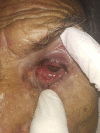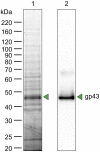Paracoccidioidomycosis: Current Status and Future Trends
- PMID: 36074014
- PMCID: PMC9769695
- DOI: 10.1128/cmr.00233-21
Paracoccidioidomycosis: Current Status and Future Trends
Abstract
Paracoccidioidomycosis (PCM), initially reported in 1908 in the city of São Paulo, Brazil, by Adolpho Lutz, is primarily a systemic and neglected tropical mycosis that may affect individuals with certain risk factors around Latin America, especially Brazil. Paracoccidioides brasiliensis sensu stricto, a classical thermodimorphic fungus associated with PCM, was long considered to represent a monotypic taxon. However, advances in molecular taxonomy revealed several cryptic species, including Paracoccidioides americana, P. restrepiensis, P. venezuelensis, and P. lutzii, that show a preference for skin and mucous membranes, lymph nodes, and respiratory organs but can also affect many other organs. The classical diagnosis of PCM benefits from direct microscopy culture-based, biochemical, and immunological assays in a general microbiology laboratory practice providing a generic identification of the agents. However, molecular assays should be employed to identify Paracoccidioides isolates to the species level, data that would be complemented by epidemiological investigations. From a clinical perspective, all probable and confirmed cases should be treated. The choice of treatment and its duration must be considered, along with the affected organs, process severity, history of previous treatment failure, possibility of administering oral medication, associated diseases, pregnancy, and patient compliance with the proposed treatment regimen. Nevertheless, even after appropriate treatment, there may be relapses, which generally occur 5 years after the apparent cure following treatment, and also, the mycosis may be confused with other diseases. This review provides a comprehensive and critical overview of the immunopathology, laboratory diagnosis, clinical aspects, and current treatment of PCM, highlighting current issues in the identification, treatment, and patient follow-up in light of recent Paracoccidioides species taxonomic developments.
Keywords: Paracoccidioides; Paracoccidioides brasiliensis; Paracoccidioides lutzii; diagnostics; dimorphic fungi; endemic mycosis; epidemiology; mycology.
Conflict of interest statement
The authors declare no conflict of interest.
Figures
















References
-
- Lutz A. 2004. Uma micose pseudococcídica localizada na boca e observada no Brasil. Contribuição ao conhecimento das hifoblastomicoses americanas, p 483–494. In Benchimol JL, Sá MR (ed), Adolpho Lutz obra completa, vol 1. Dermatalogia e micologia. FIOCRUZ, Rio de Janeiro, Brazil.
-
- Splendore A. 1912. Zymonematosi con localizzazione nella cavita della bocca, osservata in Brasile. Bull Soc Pathol Exot 5:313–319.
-
- de Almeida F. 1930. Estudos comparativos do granuloma coccidióidico nos Estados Unidos e no Brasil. Novo gênero para o parasito brasileiro. An Fac Med Sao Paulo 5:125–141.
-
- Moore M. 1935. A new species of the Paracoccidioides Almeida. Rev Biol Hig 6:148–162.
-
- Gezuele E. 1989. Aislamiento de Paracoccidioides sp. de heces de pinguino de la Antartida. In Proceedings of the IV International Symposium on Paracoccidioidomycosis. Instituto Venezolano de Investigaciones Cientificas, Caracas, Venezuela.
Publication types
MeSH terms
LinkOut - more resources
Full Text Sources

